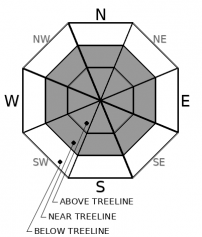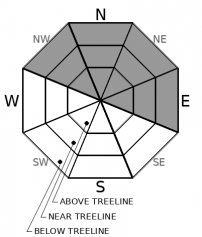| Wednesday | Wednesday Night | Thursday | |
|---|---|---|---|
| Weather: | Sunny. Snow levels below 7000 feet increasing to 7500 feet in the afternoon. Chance of precipitation is 0%. | Partly cloudy then becoming clear. Snow levels 7500 feet. Chance of precipitation is 5%. | Sunny. Snow levels below 7000 feet. Chance of precipitation is 5%. |
| Temperatures: | 40 to 45 deg. F. | 20 to 25 deg. F. | 37 to 42 deg. F. |
| Mid Slope Winds: | Light winds. | Light winds. | Light winds. |
| Expected snowfall: | No accumulation. | SWE = none. | No accumulation. | SWE = none. | No accumulation. | SWE = none. |
| Wednesday | Wednesday Night | Thursday | |
|---|---|---|---|
| Weather: | Sunny. Snow levels below 7000 feet increasing to 7500 feet in the afternoon. Chance of precipitation is 0%. | Partly cloudy then becoming clear. Snow levels 7500 feet. Chance of precipitation is 5%. | Sunny. Snow levels below 7000 feet. Chance of precipitation is 5%. |
| Temperatures: | 37 to 42 deg. F. | 17 to 22 deg. F. | 38 to 43 deg. F. |
| Ridge Top Winds: | Northwest 15 to 25 mph with gusts to 40 mph. | North 15 to 30 mph with gusts to 40 mph shifting to the northeast 15 to 20 mph with gusts to 30 mph after midnight. | Northeast 10 to 15 mph. |
| Expected snowfall: | No accumulation. | SWE = none. | No accumulation. | SWE = none. | No accumulation. | SWE = none. |



























